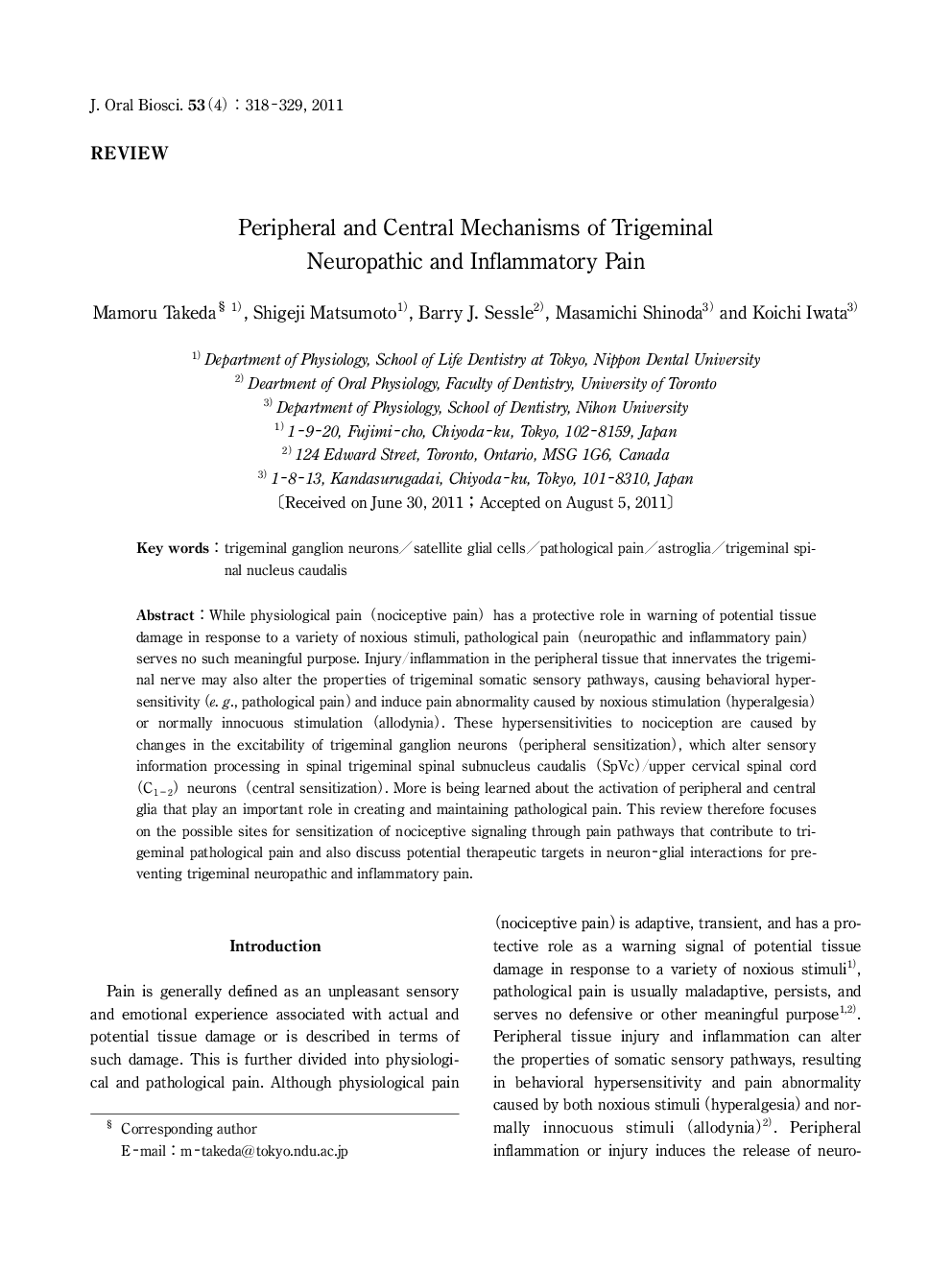| Article ID | Journal | Published Year | Pages | File Type |
|---|---|---|---|---|
| 2776950 | Journal of Oral Biosciences | 2011 | 12 Pages |
While physiological pain (nociceptive pain) has a protective role in warning of potential tissue damage in response to a variety of noxious stimuli, pathological pain (neuropathic and inflammatory pain) serves no such meaningful purpose. Injury/inflammation in the peripheral tissue that innervates the trigeminal nerve may also alter the properties of trigeminal somatic sensory pathways, causing behavioral hypersensitivity (e.g., pathological pain) and induce pain abnormality caused by noxious stimulation (hyperalgesia) or normally innocuous stimulation (allodynia). These hypersensitivities to nociception are caused by changes in the excitability of trigeminal ganglion neurons (peripheral sensitization), which alter sensory information processing in spinal trigeminal spinal subnucleus caudalis (SpVc)/upper cervical spinal cord (C1–2) neurons (central sensitization). More is being learned about the activation of peripheral and central glia that play an important role in creating and maintaining pathological pain. This review therefore focuses on the possible sites for sensitization of nociceptive signaling through pain pathways that contribute to trigeminal pathological pain and also discuss potential therapeutic targets in neuron-glial interactions for preventing trigeminal neuropathic and inflammatory pain.
